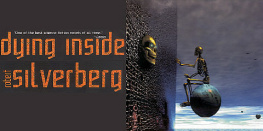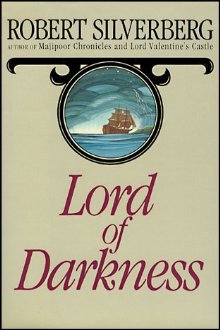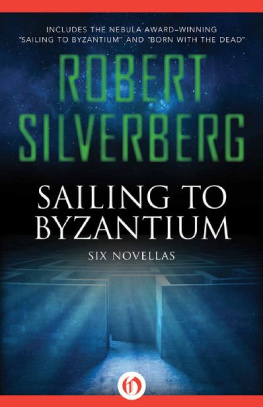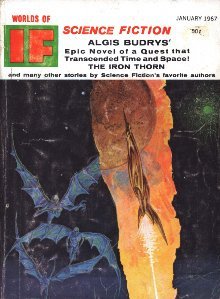Robert Silverberg - Dying Inside
Here you can read online Robert Silverberg - Dying Inside full text of the book (entire story) in english for free. Download pdf and epub, get meaning, cover and reviews about this ebook. year: 2002, publisher: iBooks, genre: Detective and thriller. Description of the work, (preface) as well as reviews are available. Best literature library LitArk.com created for fans of good reading and offers a wide selection of genres:
Romance novel
Science fiction
Adventure
Detective
Science
History
Home and family
Prose
Art
Politics
Computer
Non-fiction
Religion
Business
Children
Humor
Choose a favorite category and find really read worthwhile books. Enjoy immersion in the world of imagination, feel the emotions of the characters or learn something new for yourself, make an fascinating discovery.
- Book:Dying Inside
- Author:
- Publisher:iBooks
- Genre:
- Year:2002
- Rating:5 / 5
- Favourites:Add to favourites
- Your mark:
- 100
- 1
- 2
- 3
- 4
- 5
Dying Inside: summary, description and annotation
We offer to read an annotation, description, summary or preface (depends on what the author of the book "Dying Inside" wrote himself). If you haven't found the necessary information about the book — write in the comments, we will try to find it.
Dying Inside — read online for free the complete book (whole text) full work
Below is the text of the book, divided by pages. System saving the place of the last page read, allows you to conveniently read the book "Dying Inside" online for free, without having to search again every time where you left off. Put a bookmark, and you can go to the page where you finished reading at any time.
Font size:
Interval:
Bookmark:

An ibooks, Inc. ebook
ibooks, Inc.
24 West 25th St.
New York, NY 10010
The ibooks World Wide Web Site Address is:
http://www.ibooksinc.com
Copyright 1972, 2002 by Agberg, Ltd.
Introduction copyright 2001, 2002 by John Clute
e-ISBN: 1-59176-009-7
Print ISBN: 0-7434-3508-7

ROBERT SILVERBERG
DYING INSIDE
ROBERT SILVERBERGs many novels include The AlienYears; the most recent volume in the Majipoor Cycle, LordPrestimion; the bestselling Lord Valentine trilogy; and the classics Dying Inside and A Time of Changes. Sailing toByzantium, a collection of some of his award-winning novellas, was published by ibooks in 2000. Science Fiction101Robert Silverbergs Worlds of Wonder, an examination of the novellas that inspired him as a young writer, was published in March 2001, followed by Cronos, a collection of three time-travel pieces published in August 2001. He has been nominated for the Nebula and Hugo awards more times than any other writer; he is a five-time winner of the Nebula and a four-time winner of the Hugo.
Where Silverberg goes today, the rest of science fiction will follow tomorrow.
Isaac Asimov
One of science fictions modern masters... his words and his work have shaped the whole direction of the field.
Chicago Sun-Times
Done Silverbergs way, science fiction is a fine art.
Associated Press
AN INTRODUCTION
So, then, he tells you, it is the first sentence of the novel, I have to go downtown to the University and forage for dollars again. We soon find out that Selig lives in New York, and is immured in the metropolis (Dying Inside never in fact leaves Manhattan, except for a few pages spent in Brooklyn Heights, which is a coign of vantage whose only true sight is of Manhattan). When the novel opens, in 1976, four years in the future, downtown for Selig is Morningside Heights, Columbia University. He goes there to get clients, students for whom he ghosts terms papers at three bucks a page. He uses his telepathic powersit is how he has used them for years, long before he was aware that they had begun to fadeto gain some sense of his clients intelligence, of how they would be likely to express themselves. Beyond the occasional browse through the surface thoughts of an attractive woman, this is the extent of his use of a godlike power. Except for his sister Judith, and a fellow telepath he has lost touch with, he keeps his power utterly secret.
His true life is, of course, not that simple. The task Robert Silverberg had in Dying Inside (1972)which may be the best of the more than 20 extraordinary novels he published between 1967 and 1976, a decade of miraculously intense production which also saw the release of at least 17 short story collectionswas to give us the worst of David Selig, the self-pitying drone of a man whose internal dying seems long to have preceded the dying of the gift he blames his woes on; to give us that voice while at the same time allowing us gradually to understandit is a slow but perfectly timed understandingthat we are not reading a book about the death pangs of a man with Talent, but a book about the birth pangs of a man.
David Selig discovers his gift as a child. He uses his ability to read the surface level of other minds (and sometimes all the way down into others souls) to keep himself safe, to do well at school, to dodge artfully. Or this is what we understand from the claims, the admissions, he utters to the readers, the yous, of his confessional memoir. But it is clear that Selig is far too smart for the life he admits to leading. According to that testimony, he is a man who reads the surface of womens minds to find out if he can fuck them (very often the answer is yes) but who has terrible luck with any permanent relationship; a man whose deepest passion (which he seems incapable of recognizing, though covertly he certainly does know whats going on here) is his incestuous intimacy with Judith, whose mind he has read for decades, constantly, without seeming to recognize that he has married her more deeply than any man she sleeps with, or that her knowledge of his reading her mind has created a similar passion on her part; an acutely sensitive literary mind who cannot make himself write anything but robot-toned term papers for Columbia jocks; a man whose occasional epiphanies of understanding of the world in its entirety generate no made thing of the mind, nothing but nostalgia. He is a fossil adolescent whose story, as he tells it, should be intolerably shallow and frozen, but he cannot help himself (Silverberg cannot help himself). The ice is there, but the ice cracks.
Everything in the book grips. Every moment of Seligs refusal to admit that he is not a tame dwarf tied to his gift but a man is painful to the reader, but also an esthetic joy. The telling of the book is fluent, subtle, edge-of-the-chair, professional, active-voice. This alertness and presence of story may be in part because Silverberg, by 1972, had developed an astonishing technical proficiency; but it is also significant that he has clearly used elements of his own life in the invention of Seligs, that the true story of Dying Inside is a story of how an intelligencean intelligence ferocious to the point of geniuslearns how not to hide. Over and above this likemindedness, author and subject share some physical characteristics, share the same birth year, are totally immersed in the same city (and there is one other match to make, which we will address in a moment). The only real fault in Dying Inside is that, from the outset, Selig is so interesting about his failures to become an adult human being that, once in a while, we almost fail to credit the lament; he is too much like his maker to convince us that he could have tolerated, for all these years before he loses his fatal gift, being only Selig.
If this is a fault, it is a fault we come to love. The pleasures of the text outweigh any sense that Selig is implausible when he tries to be only Selig. The writing itself, for instance, which gives off an air of straightforward task-accomplishment, is in fact an echo-chamber of the splendours and miseries of the literary life of the West over the last century or so. These echoes are acutely couched, conservative, cosmopolitan. Rereading Dying Inside after 30 years, I was conscious of constantly encountering echoes of the voices who wrote the Western World as we know it: T. S. Eliot, E. M. Forster, James Joyce, Marcel Proust, Walt Whitman, William Butler Yeats, many more.
One paragraph (it is the last paragraph of Chapter 17) in particular gives us this sound of the Western Worldor that part of it which T. S. Eliot embodied more eloquently than any other writertalking to itself:
Font size:
Interval:
Bookmark:
Similar books «Dying Inside»
Look at similar books to Dying Inside. We have selected literature similar in name and meaning in the hope of providing readers with more options to find new, interesting, not yet read works.
Discussion, reviews of the book Dying Inside and just readers' own opinions. Leave your comments, write what you think about the work, its meaning or the main characters. Specify what exactly you liked and what you didn't like, and why you think so.



















